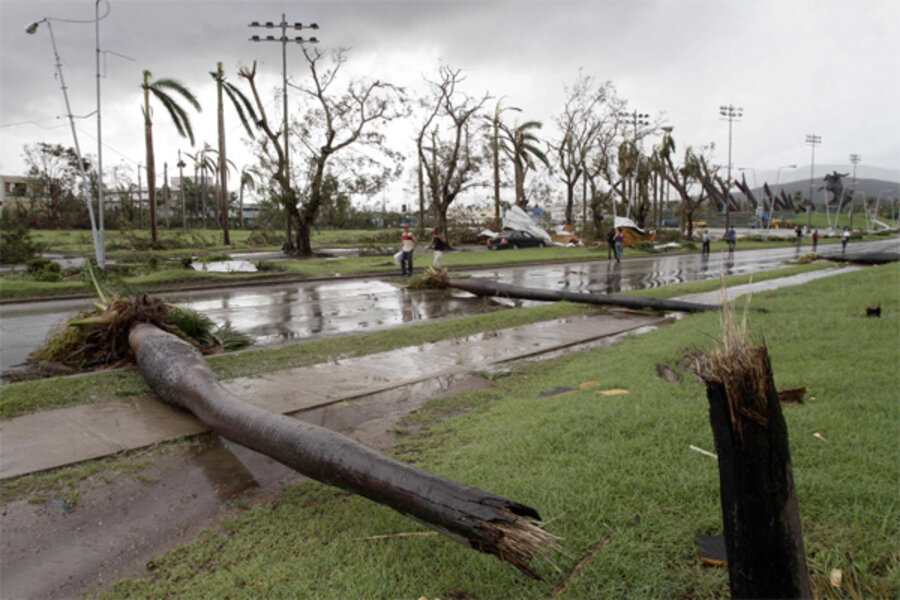Hurricane Sandy: Stay safe at home with the kids using these tips
Loading...
As Halloween approaches next week, all eyes have turned to another “H” – the incoming hurricane christened Sandy that experts are warning could affect the entire East Coast and, if it meets up with a cold front, combine to create a powerful storm.
As I was growing up on Cape Cod, hurricane warnings would often go out in the fall, but we were lucky enough never to get really slammed by one in my lifetime. I was only a toddler for Hurricane Bob, the last big one, so have no memory of it. According to my parents, my dad was at work, doing his usual night shift at the local newspaper and my mom took me down to the basement just in case, where I apparently thought it was just normal basement playing fun time and spent the time absorbed in my mini basketball hoop.
Hurricane Irene did mess with our plans slightly last year when it struck New York City during the week we were moving my younger sister into college at Fordham University. It was still calm skies when we were unloading possessions into the dorm building, but the dire weather reports and the state of emergency declared for the city didn’t exactly create the calm atmosphere one would hope for in dropping a child off at college for the first time. RAs assured us that the school had taken every precaution to keep the new freshmen (the only ones at the school for the week) safe, but my parents and I still stayed glued to weather reports the night after we dropped off my sister. Luckily, the area where her college is located wasn’t badly affected.
And now Hurricane Sandy, which has been nicknamed 'Frankenstorm,' is heading up from Florida and Georgia, with experts predicting it (or she, if you prefer) could arrive in New York or New Jersey on Tuesday.
How bad will it be? It seems like hurricanes are notorious for weakening at the last minute or veering off somewhere else. But just in case, here are some Red Cross-recommended tips for you and your family if you and the kids are in the house when the storm hits.
With your family, create or remind yourselves of a disaster evacuation plan if you all need to quickly get out of the house. Have two separate meeting places that everyone knows about, one close to the house and one far away from your neighborhood in case the emergency is widespread and it’s unsafe to stay in the area. Also establish someone living far away (a far enough distance that they wouldn’t be affected by the weather, if possible) as an emergency contact person.
Make sure each family member knows how to turn the water and electricity on and off, but only shut the gas off if local authorities ask you to do so.
Create a kit with emergency items and store it in a water-resistant container – it should contain enough supplies for at least three days. Pack water (enough for each person to have a gallon of water a day), non-perishable food like peanut butter and canned fruit, a radio, flashlight (with replacement batteries), a first-aid kit, a sleeping bag for each person, extra cash, medicine (especially any prescription items you or the kids need), and important papers like birth certificates.
If there’s a hurricane watch for your area, keep the radio on and listen to updates and fill up your gas tank as well as closing your doors and windows, and cover windows with wood if possible. Bring indoors items from outside like bicycles and garden tools.
If there’s a hurricane warning, an evacuation order is more likely, so be ready to leave at any time. Turn off appliances if the power goes out to avoid a surge when the electricity returns and avoid standing or sitting near windows, glass doors, and skylights.






